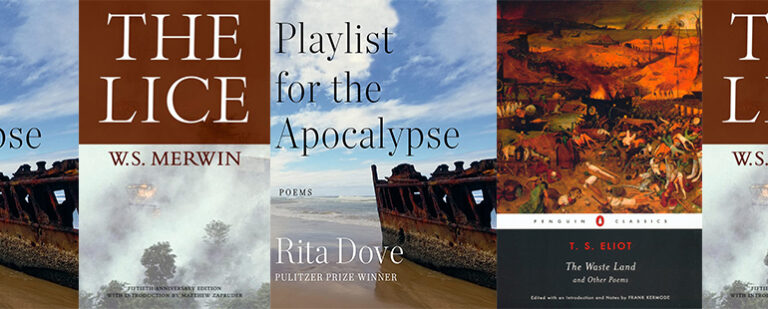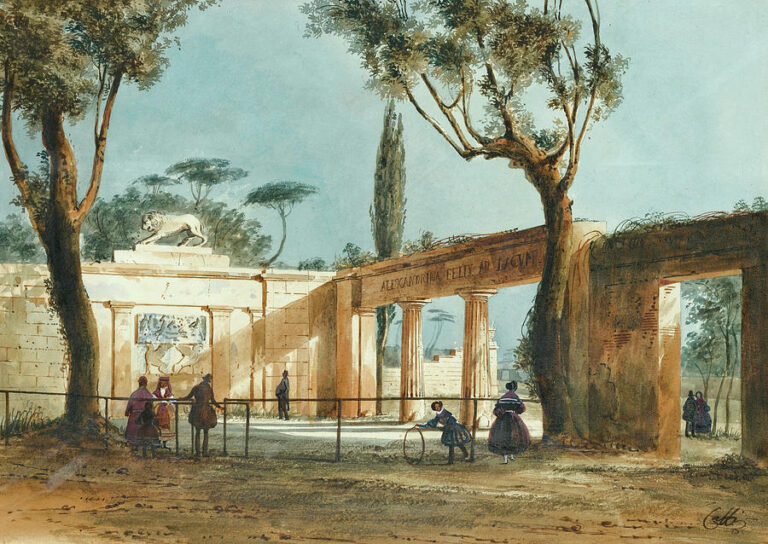Music, Violence, and Joy in They Can’t Kill Us Until They Kill Us

The last time I went to a concert, I saw Australian singer-songwriter Julia Jacklin at Ace of Cups—a little club behind a broken glass door in a row of storefronts on the margins between my Columbus neighborhood and Ohio State University’s campus. It was also my first concert in a great while at a small, standing-room-only venue. I’d gotten into the habit of preferring theater seats and older crowds; I’m older now, too. But Julia Jacklin’s music, her image and ethos, give shape to her listeners’ miasmic longing that hangs like smoke above our heads and asks us to remember our youth if we’re no longer young or, if we are, to see past it to our future yearning. To watch her play meant standing in a crowd of people in a small, dark room again.
When Jacklin walked out on stage that night, she was wearing a floor-length, puff-sleeved, hot-pink prom dress she’d bought earlier that afternoon at Flower Child, one of Columbus’ best second-hand shops. It was the kind of dress you’d see on a TV-version of a suburban 1980s teenager, the kind of dress Molly Ringwald would’ve cut up, resewn, and transformed into a new wave miracle. But Jacklin loved the dress just as it was. She said she loved it so much she had decided to put it on for the show, even though, she told us, it was tight and made it a little hard to breathe.
We laughed at the irony, our bodies crammed together. Caught up in remembering how we used to be, the ludicrous things we used to wear, we gazed up adoringly at Jacklin’s beautiful, disarming face. “Hello, Columbus!” she said to the crowd, “I’ve never been here before and I think I like it.” “We like you too,” someone shouted back. “Welcome!”
Columbus is imminently likable. At first glance the city seems homogenous, glazed in a pleasant monotony, but slowly, with patience, its stratified layers will show: sandstone and shale; mottled and brittle; the good, Midwestern soil, and, in one of Columbus’ preeminent suburbs, the bodies of nineteenth-century Black migrants buried under a high school. What moves, what courses over, under, and through, is music.
The city has always had a flourishing music scene, from 1930s jazz in the King-Lincoln neighborhood to 1980s punk on OSU’s campus. Music elucidates a place, gives history a time signature, and no one understands Columbus’ musical topography better than poet, critic, and punk rock and emo aficionado Hanif Abdurraqib who, while conscious of Heraclitus’ warning that we can never step in the same river twice, knows some things remain the same: violence, death, joy’s shimmering evanescence. It’s fitting that the second essay in Abdurraqib’s 2017 essay collection, They Can’t Kill Us Until They Kill Us, “A Night in Bruce Springsteen’s America,” focuses on Springsteen’s 1980 album The River. Abdurraqib uses The River, his experience at Springsteen’s 2016 New Jersey concert, and a visit to Michael Brown’s memorial plaque in Ferguson, Missouri to illuminate a conflict he sees in his own project, perhaps in any endeavor toward joy: how can one write about music, let alone listen to it or make it, when people are dying?
They Can’t Kill Us Until They Kills Us uses the context of 2016 as a way to better understand Abdurraqib’s past, and now the book provides a context for 2020—how we got here, the mistakes we made, an explanation for the worsening political weather. Underlying the regret and nostalgia is an underlying truth: Black Americans keep dying. In his essay titled “February 26, 2012,” for example, Abdurraqib, after leaving an Atmosphere show, checks his phone and discovers that Trayvon Martin had been murdered. This, he says, is “[w]hat a country’s fear of blackness can do while you are inside a room, soaking in joy, being promised that you would make it through.” Abdurraqib sees Springsteen’s The River as “an album of a specific type of optimism—one not afforded to everyone who listens to it.”
Abdurraqib is unflaggingly curious about the salvation that music brings, and the, intentional or not, consequences of listening. What kinds of stories, for example, is Springsteen telling us, versus the ones NOFX tells us, or the ones Fall Out Boy tells us, and who is buying them, buying into them? He reminds us, over and over again, that “[i]t is a luxury to romanticize blood, especially your own. It is a luxury to be able to fetishize violence, especially the violence you inflict on others,” though he wants desperately to understand why people do it, imaging they might “use it as a bond, or it call it church, or . . . build an identity around it while knowing that everyone you can send home bloody will not come back for revenge.” Abdurraqib is talking about punk rock here, but he poses a similar question of Springsteen as he does of Cute Is What We Aim For—a band Abdurraqib argues perpetuates male grievance in its attitude toward women, an ethos that may begin in moments of emotional crisis but, codified and disseminated, leads to systemic misogyny. “The problem is one of audience though,” Abdurraqib says. “The problem is one of the notebook becoming public, sung to thousands.”
Abdurraqib believes deeply in music’s capacity to give voice to those who have been historically marginalized, but he also recognizes that music can sometimes propagate destructive attitudes. He is careful not to moralize, however, recognizing in himself “the politics around sadness, gender, and anger,” the band’s 2016 concert causing in him a feeling as if he were “exiting my current body and watching myself from through my younger eyes, wondering if that is what it was always going to come to. Returning to the balm for an old wound, ashamed that I once decided to wear it.” Abdurraqib is unwilling, now, to wear the same bandage for an old wound, acknowledging that, while music’s postures have been a “balm” for him in the past, they can be a distraction too.
In his essay “In the Summer of 1997, Everyone Took To The Streets In Shiny Suits,” Abdurraqib describes a decided turn in hip-hop toward commercialization “taken to the extreme” when “Puff Daddy [was] on every single, blinding jewelry in every video, songs drowning and shameless soul and pop samples covering the top of the charts.” Abdurraqib finds comfort in the excess, recognizing that, “this, too, is a response to grief. Covering yourself in the spoils of your survival and making music that sent people dancing in the streets again . . . The shiny suit era, for all its detractors, was a gift in that summer and beyond.” In 1997, music lost the Notorious B.I.G., Abdurraqib lost his mother, and, in their place, “a trick to pull our eyes away” arrived, which was, in his view, the ubiquity of excess, of money, jewelry, music production values. Abdurraqib’s ability to accept 1997’s inherent complexities and ambiguities offer both his younger self grace and his current self—the writerly self—a capacity for criticism that can only come with time and reflection. In other words, the real “trick” Abdurraqib achieves is the ability to look and, at the same time, to not look. Distractions are important because they gift us breathers, pauses, in what is essentially endless violence. And if violence is the country’s bedrock, we step into music’s stream running above it at various places, in various moments and contexts, and are carried—at least for a time—along.
Throughout They Can’t Kill Us Until They Kill Us, Abdurraqib negotiates the simultaneous realities of racially-motivated violence on Black communities across the United States and his own Columbus youth spent exploring the “margins”—as he often calls them—of segregated neighborhoods, of cultures and identities. He has great empathy for his younger self, but recognizes now, as a savvy cultural critic, pop music’s perpetuation of deeply entrenched violence, and why he might have been drawn as a younger man to, for example, a genre like punk that thrives on exclusion and White anger. He understands, too, how popular music—whatever the genre, whatever the mode—is necessarily fleeting. It thrives on the moment, then, on our recollection of the moment—in punk’s case a hard and fast one, violently and miraculously brief, so that the ear’s relief after the show is over is nearly as gratifying as the music itself. Abdurraqib understands intrinsically how the two interact—suffering’s stolidity and the flexible, mutable, quicksilver river of music that flows over it. In the collection’s final essay, “Surviving on Small Joys,” he writes, “Love and joy alone will not rid America of its multilayered history of violence that has existed for longer than any of us have been alive. That violent culture, no matter the amount of prayers and grief we throw at it, remains unshakable. It is rooted so firmly into the machinery of America that it has its hands around our decision-making processes, the language we use for endurance and survival.”
Yet, Abdurraqib would be the first to admit that music can—if only for a moment—take us out of ourselves, and to see music live is an ecstatic experience, an act of communion, ceremonial in nature and, as such, requires the right outfit for optimal transcendence: a big, shiny suit and a pair of pristine, white sneakers, maybe, or a Vintera Telecaster slung over a hot-pink prom dress.
This piece was originally published on September 17, 2020.


